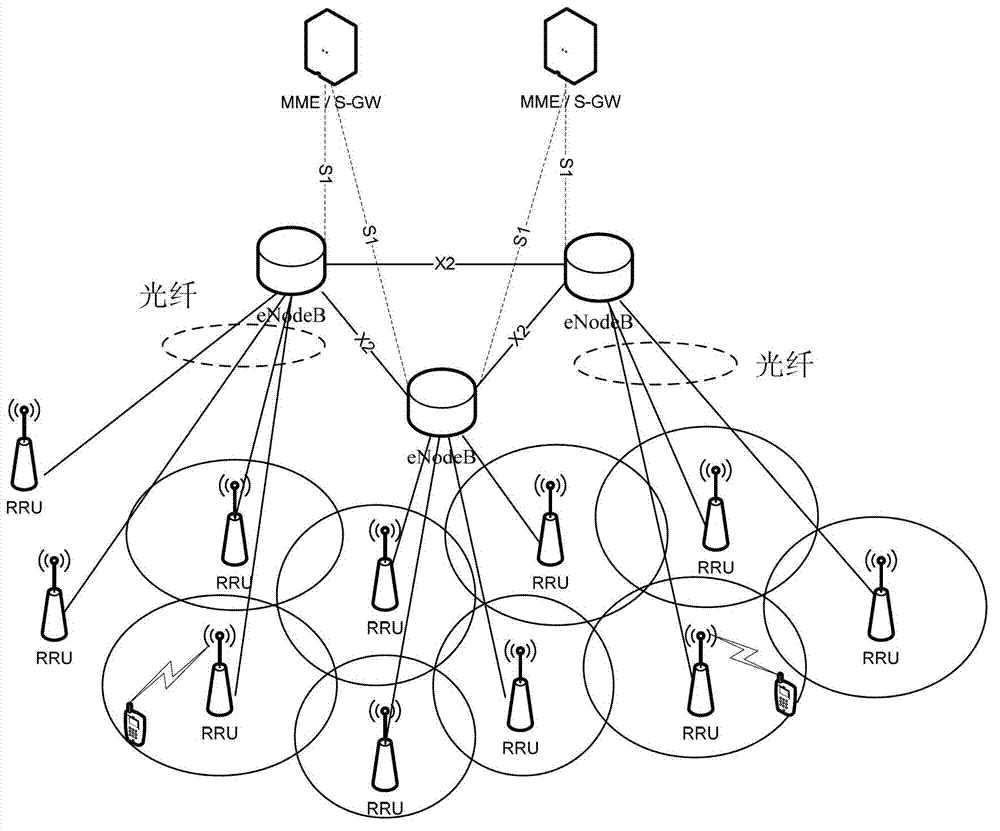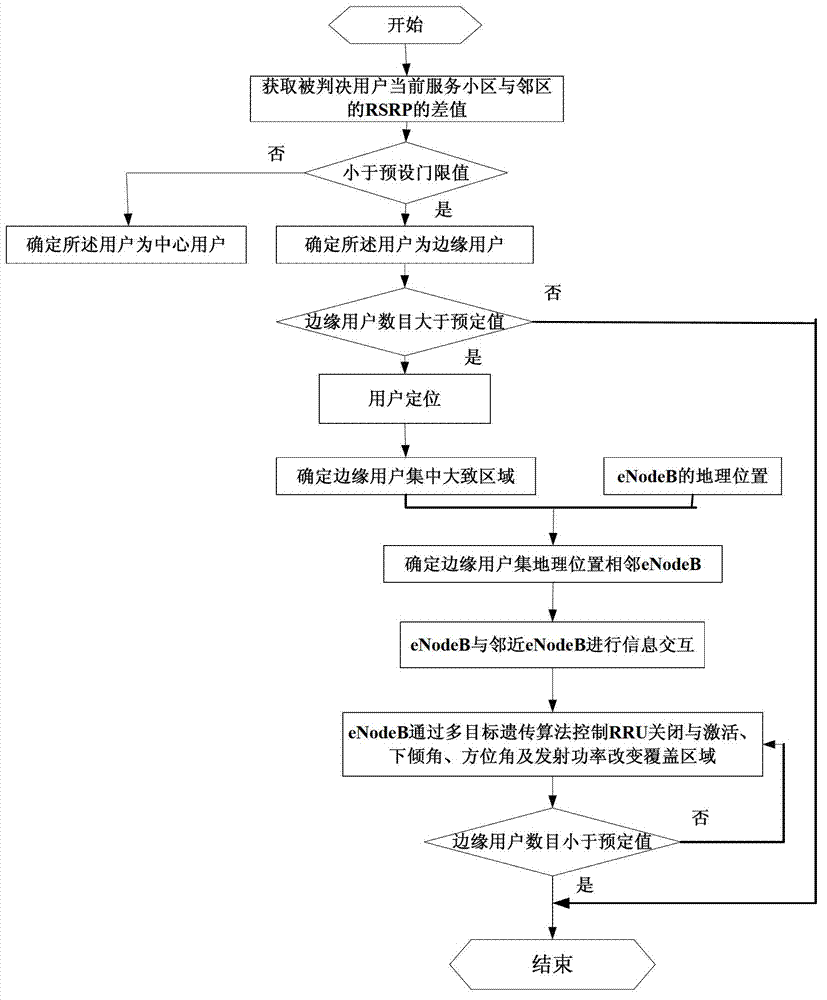Method for improving performance of cell edge users by using multi-objective genetic algorithm
A multi-objective genetic, cell edge technology, applied in the field of improving cell edge user performance, can solve the problem that it is difficult for resource scheduling algorithms to consider frequency domain, time domain, air domain and power fairness at the same time, poor interference suppression effect, random cell interference It solves the problem of high complexity, and achieves the effect of improving the throughput of the cell edge, reducing the number, and reducing the probability of inter-cell interference.
- Summary
- Abstract
- Description
- Claims
- Application Information
AI Technical Summary
Problems solved by technology
Method used
Image
Examples
Embodiment Construction
[0044] Embodiments of the present invention will be described in detail below in conjunction with the accompanying drawings.
[0045] The present invention adopts the radio remote unit (the English full name of the radio frequency remote unit is Radio Remote Unit, abbreviated as RRU) + baseband processing unit (the English full name of the baseband processing unit is Base Band Unit, abbreviated as BBU) to carry out networking, such as figure 1 shown. exist figure 1 Among them, MME (Mobility Management Entity) is the key control node of 3GPP protocol LTE access network. It is responsible for the positioning of UE in idle mode, paging process, including relay, and S-GW (Serving GateWay) is the connection NO.7 signaling Network and IP network equipment, S1 is a logical interface defined by 3GPP, the third-generation mobile communication technology specification organization, eNodeB is an enhanced base station, one BBU corresponds to one logical cell, and multiple RRUs cover one ...
PUM
 Login to View More
Login to View More Abstract
Description
Claims
Application Information
 Login to View More
Login to View More - R&D
- Intellectual Property
- Life Sciences
- Materials
- Tech Scout
- Unparalleled Data Quality
- Higher Quality Content
- 60% Fewer Hallucinations
Browse by: Latest US Patents, China's latest patents, Technical Efficacy Thesaurus, Application Domain, Technology Topic, Popular Technical Reports.
© 2025 PatSnap. All rights reserved.Legal|Privacy policy|Modern Slavery Act Transparency Statement|Sitemap|About US| Contact US: help@patsnap.com



